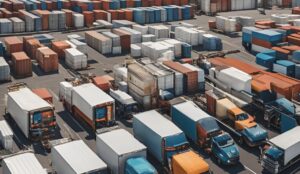The war in Ukraine has had some impact on natural gas prices, particularly in Europe. Ukraine is a major transit country for natural gas from Russia to Europe, and disruptions to gas supplies through Ukraine have occurred in the past as a result of the conflict. When these disruptions happen, it can lead to concerns about the reliability of gas supplies in Europe, which can cause prices to rise. Additionally, the war has led to sanctions between Russia and other countries, which can also impact the price of natural gas.
What is happening to the natural gas market?
During the war and the political crisis, Russia has cut off the natural gas supply to Ukraine several times, and this has led to disputes between Russia and other countries in Europe that depend on gas transit through Ukraine. This has led to concerns about the security of energy supplies in Europe, which can cause prices to rise. It’s worth noting that the natural gas market is a global one and prices are determined by various factors, some unrelated to the war in Ukraine. The war in Ukraine is just one of many factors that can affect natural gas prices.
The EU did experience nearly a year of rapidly growing gas prices. From a peak price, in August, of €340 a megawatt-hour to just 76€ a megawatt-hour. Demand for it has not been as high as expected due to a relatively mild winter. Europe has also begun to tap into American natural gas, as well as other alternatives to Russia.
How might gas prices change?
The natural gas market in Europe is expected to change in the future, as countries in the region work to reduce their dependence on fossil fuels and transition to cleaner forms of energy. Some of the prospects for the natural gas market in Europe in the future include:
- Increasing competition from renewable energy sources: As countries in Europe work to meet their renewable energy targets, the use of renewable energy sources such as wind and solar power is expected to increase, which could lead to a decrease in the demand for it.
- Development of new technologies: Advances in technology, such as carbon capture and storage, could make natural gas a cleaner and more attractive option for power generation in the future.
- LNG import: The increasing use of liquefied natural gas (LNG) imports in Europe has the potential to diversify the supply of it in the region, reducing dependence on a single supplier.
- Interconnections: The development of new interconnections between countries, such as pipelines and LNG terminals, could allow for greater flexibility in the natural gas market, making it easier to respond to changes in demand and supply.
- Decarbonization: As Europe continues to decarbonize its economy, the demand for natural gas is expected to decrease. However, it will still have a role to play in the transition period as a “bridge fuel” to reach the target of net-zero emissions by 2050 or sooner.
What should companies keep in mind?
Businesses in Europe that are affected by changes in natural gas prices can take several steps to prepare for potential price changes in 2023. Firstly, businesses can develop a strategy to manage the risks associated with changes in prices, such as by hedging against price fluctuations or by diversifying their energy sources. It is also important an eye on the market and stay informed about potential changes in supply and demand, as well as government policies and economic conditions that could impact prices, which can help businesses anticipate and prepare for price changes.
Ideally, companies should learn from their peers and explore how other businesses approach energy forecasting. The Global Summit on Scope 3 Emissions Reduction will bring together key industry experts to learn more about reporting strategies & carbon data management in a small-scale, industry-driven event, on 20-21st April 2023 in Amsterdam, the Netherlands. The two-day, hybrid event features in-depth case studies of supply chain transformation, carbon accounting, and networking breaks dedicated to exchanging insights and expertise on tackling Scope 3 emissions. Visit future-bridge.eu and netzero-events.com or follow us on our social media to track other energy use and decarbonization events.





